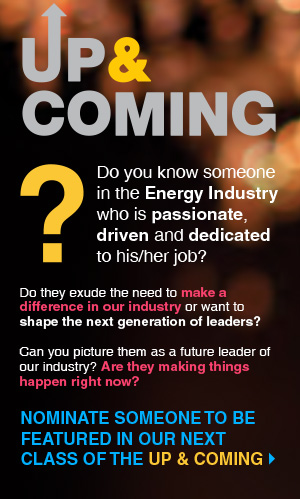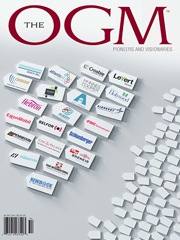by Heather Rogan
Published on February 25th, 2015
The Unlearning Curve
Twenty years, inclusive of a major and a minor, three summer terms and fifteen years of full time work, is how long it has taken me to learn that I in fact know very little. For years, I operated under the illusion that becoming an adult and a professional meant that I would fully master the knowledge of my trade and the perfection of my craft. I prepared myself for the exponential learning curve of the early years and then, the predictable yet satisfactory application of my knowledge for the years that would follow. Reality has been very different.
Without a doubt, those early years of engineering were like being hit with a tidal wave of information and understanding. However, although that initial wave marked the first time I was aware of the strength of the ocean, it in no way meant that I was done being moved by its force. The ebb and flow of tides, certainly less startling than an unexpected wave, are no less powerful in their ability to shape their surroundings. The problem with learning is similar. In the beginning, you believe that simply surviving the wave means you understand the ocean, whereas with age and experience, it becomes clear that to truly know the ocean, you must first know the moon. How strange is it that to understand what reigns over two-thirds of our Earth, you have to understand a small orb over 380 thousand kilometers away that only reveals itself to the naked in eye in the darkness of night? All the years you spent looking down into those deep waters and asking questions turned out to be a deceptive start as you in fact needed first to look up into the endless skies. That is the essential problem of the unlearning curve- the more we learn, the more we become aware of how little we actually know.
So what do I know? I was taught to use tools to obtain data in order to solve problems. Today, I know that much of that data is either impossible to obtain or worse, impossibly unreliable. I was taught formulas and methods to apply to the questions used to make million dollar decisions. Today, I know that many of those formulas only apply to very specific situations and that one small mistake in a method can cost millions. I was taught processes to work through problems and I learned how to take a question through to an answer on my own. Today, there is nothing I do that relies on just my work, rather, I utilize the cumulative result of multiple people running multiple processes, risking multiple mistakes, in order to get an answer in support of a recommendation. I was shown technology to help expedite the solutions. Today, those programs are largely obsolete or unrecognizable from their form nearly two decades ago. So what do I know? I know that I, in fact, know very little. The confidence I expected to have at this stage in my career when I first stepped through the doors of the university nearly two decades ago has been replaced by a sense of wonder that the learning curve is not exponential, it is in fact infinite.
The realization that I would never be a “master” or an “expert” was both terrifying and liberating. The limitations were as much mine as they were the fact that our world seems to expand every time science takes a step forward. No matter how hard I run, I can never keep up to the billions of people pushing science forward each and every second of each and every day. The real question then becomes this: if perfect knowledge is not just improbable, but impossible, how do we still make smart bets on multi-million dollar decisions? Furthermore, how does one mentor and develop others in their professional development with so many unknowns remaining? This is where the unlearning curve comes into play. The more I can strip out the things I thought I knew, for the things I actually know, the better I can quantify risk, assess choices and teach others the strengths and limitations of the professional tools they are employing.
For me, the unlearning curve has been about embracing the world of uncertainty. This ranges from understanding the limitations of the data we collect, the pitfalls of tools and formulas we implement to analyze it, and most importantly, the confidence that there is no single answer, there is no perfect decision. The unlearning curve has also been about being willing to start from scratch and learn from those in the infancy of their careers but equipped with the latest in tools, fresh with new perspectives and techniques. It has also been about a steadfast dedication to keep an open mind so that I can incorporate the observations and findings of other professionals as they forge ahead with science and unlearn all the things we thought we knew with certainty. While time in my trade has not made me a master, it has given me the wisdom to know the importance of unlearning every day, the criticality of keeping an open mind and approaching each day full of curiosity.
What do I know? I know that while I may never fully understand all the mechanics of the ocean’s tides and their intricate relationship with the skies, the evidence is nonetheless in front of me in every shoreline and every sea creature. Understanding its power is possible; understanding all the intricacies of the system may not be. Twenty years ago that would have frustrated me, consumed me, but today, I relish a world that is still so full of mystery. For me, that is enough. So for now, I will gladly accept my spot on the shore, remember to look both to the depths of the sea and to the expanse of the sky as the waves lap my feet, and look forward to the many years of both the learning and unlearning I have ahead.
“The only true wisdom is in knowing you know nothing.” - Socrates
Did you enjoy this article?


 Paul J. Johnson – A Tribute to a Passionate Community Leader
Paul J. Johnson – A Tribute to a Passionate Community Leader I Am a Woman, and I Am a Leader
I Am a Woman, and I Am a Leader What Makes Companies Succeed? The Waterford Energy Plan
What Makes Companies Succeed? The Waterford Energy Plan Dion Finlay - Hospitality Leader Leaves a Legacy
Dion Finlay - Hospitality Leader Leaves a Legacy
